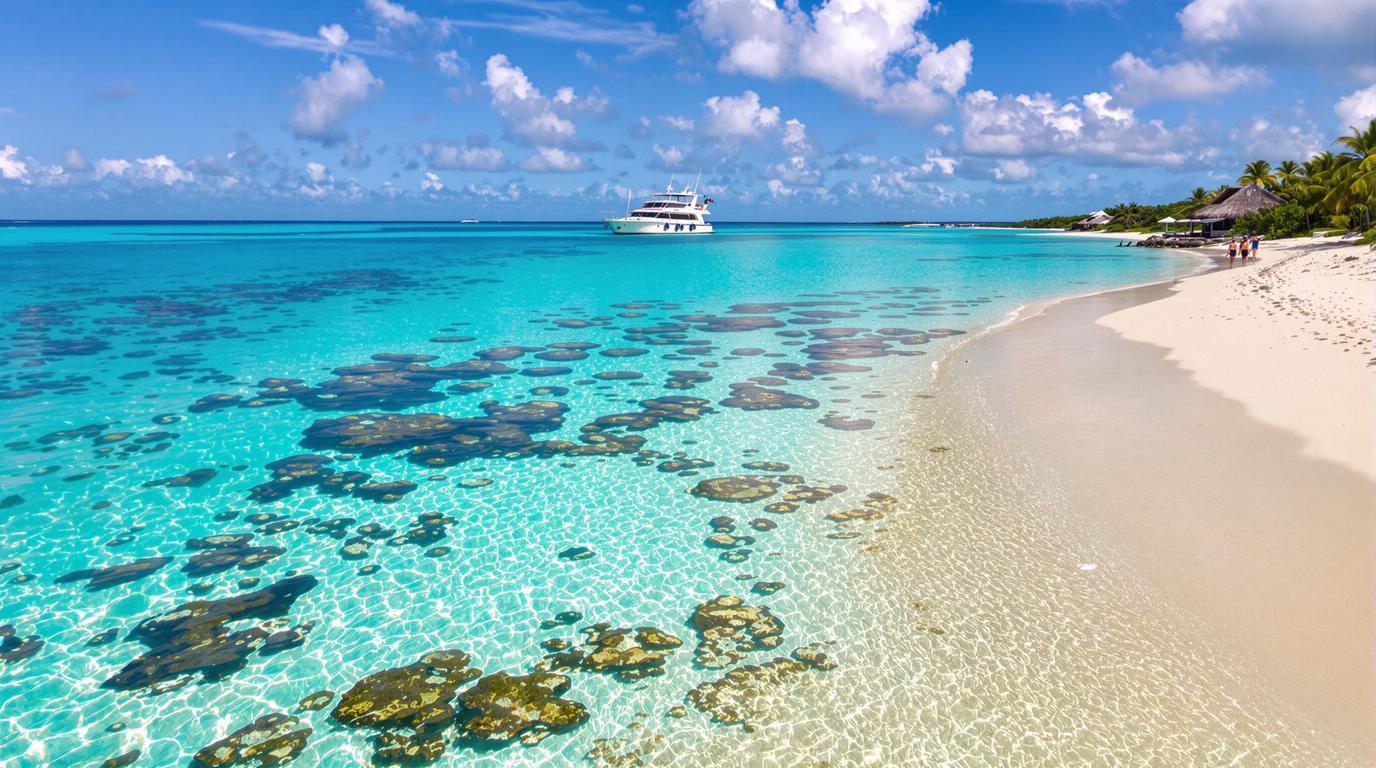The crystalline waters of Shoal Bay reveal a secret that Anguilla’s 16,633 residents desperately want to keep hidden. During my latest Caribbean reconnaissance, I discovered something extraordinary about this two-mile stretch of pristine coral sanctuary. Unlike the cruise-ship chaos that has consumed nearby islands, this untouched paradise operates under an unspoken local agreement to protect what might be the Caribbean’s last authentic beach ecosystem.
Walking along Shoal Bay’s powdery white sand at sunrise, I witnessed something remarkable. Local fishermen carefully maneuvered around designated coral zones, while tourism operators quietly enforced mooring restrictions that most visitors never notice. This isn’t just another Caribbean beach – it’s a living testament to what happens when a small island community refuses to sacrifice authenticity for quick tourism profits.
The numbers tell a compelling story. While destinations like Jamaica welcome millions of cruise passengers annually, Anguilla’s entire population could fit inside a small stadium. This demographic reality creates something unprecedented in Caribbean tourism: a destination where locals actually outnumber visitors during peak season, maintaining authentic control over their natural heritage.
The coral sanctuary that defies Caribbean mass tourism
Protected waters that cruise ships cannot access
Shoal Bay operates under Anguilla’s Marine Parks Act of 1982, creating legal barriers that effectively exclude large vessels from its pristine waters. The Shoal Bay-Island Harbour Marine Park encompasses this entire coastal stretch, with mooring buoys strategically placed to prevent anchor damage to delicate coral formations including Acropora palmata and Acropora cervicornis species. What amazes me most is how these regulations remain largely invisible to casual visitors, creating an exclusive experience without the typical Caribbean resort artificiality.
The geological miracle locals understand
Standing on Shoal Bay’s coral and limestone foundation, you’re witnessing millions of years of Caribbean geological evolution. The island’s highest point reaches merely 240 feet above sea level, making every coastal vista feel intimate and accessible. This flat topography creates perfect conditions for the extensive coral reef system that thrives just offshore, supporting marine biodiversity that rivals destinations three times Anguilla’s size.
Hidden authenticity that transforms Caribbean expectations
Local fishing traditions that tourism hasn’t corrupted
Every morning, I watched Anguillian fishermen launch traditional boats using techniques passed down through generations. These aren’t staged cultural performances for tourists – they’re authentic livelihoods that continue because the island’s limited tourism infrastructure hasn’t displaced traditional occupations. The Department of Fisheries and Marine Resources actively supports these practices through sustainable fishing regulations that protect both coral health and local economic traditions.
The untouched reef system that snorkeling guides protect
Local dive operators treat Shoal Bay’s coral formations like precious family heirlooms, sharing access only with visitors who demonstrate genuine respect for marine ecosystems. Unlike Cuba’s heavily regulated coral sanctuaries, Anguilla’s approach relies on community stewardship rather than strict governmental control, creating more natural interactions between visitors and marine life.
The exclusive experience locals reluctantly share
Seasonal access that maintains natural rhythms
Visit between December and April, when calmer weather reveals Shoal Bay’s full splendor without the hurricane-season unpredictability that affects southern reef systems. During these months, the water temperature hovers around 78°F, creating perfect conditions for coral viewing and swimming. Local operators recommend early morning visits when sea conditions remain glass-calm and marine life shows increased activity.
Alternative beaches that only residents know
When Shoal Bay feels too discovered, locals quietly direct authentic travelers toward Rendezvous Bay or Sandy Island – secluded alternatives that maintain the same pristine conditions without any tourism infrastructure. These spots exemplify what makes Anguilla special: natural beauty that doesn’t require enhancement or commercial development to create memorable experiences.
Travel Note: The most authentic Shoal Bay experience happens during weekday mornings when local fishing boats create the only movement across otherwise mirror-still waters. This timing reveals the beach’s true character – a working coastal environment that happens to be extraordinarily beautiful.
Insider access that transforms Caribbean travel
Environmental policies that prioritize preservation
Unlike mass-tourism destinations where environmental protection feels like an afterthought, Anguilla’s small population creates natural accountability for conservation decisions. User fees for mooring buoys directly fund coral protection programs, while education campaigns help visitors understand their impact on delicate marine ecosystems. This approach creates more sustainable tourism than Colombia’s seasonal access restrictions, allowing year-round enjoyment while maintaining ecological integrity.
The authentic Caribbean that still exists
Shoal Bay represents something increasingly rare in Caribbean tourism: a destination where natural beauty and cultural authenticity coexist without commercial corruption. Compare this to overcrowded alternatives where authentic experiences become impossible to find, and you’ll understand why Anguilla’s approach creates such compelling travel experiences.
Common Questions About Shoal Bay’s Protected Status
How do locals actually prevent cruise ship access?
Anguilla’s shallow coastal waters and limited port infrastructure naturally exclude large cruise vessels, while the Marine Parks Act provides legal framework for protecting designated coral zones from anchor damage and overcrowding.
Can independent travelers still access the beach freely?
Yes, but with environmental awareness expectations. Visitors pay modest fees for mooring buoy usage and follow guidelines designed to protect coral formations while maintaining authentic access to pristine waters.
What makes this location different from other Caribbean beaches?
Shoal Bay’s combination of legal protection, community stewardship, and natural barriers creates exclusive conditions without artificial restrictions, maintaining authentic Caribbean coastal culture alongside pristine marine ecosystems.
Anguilla’s 16,633 residents have created something extraordinary: a Caribbean destination where authenticity and natural beauty survive because locals maintain control over their own paradise. In an age of cruise-ship overcrowding and commercialized beach experiences, Shoal Bay proves that small island communities can offer travelers something far more valuable than convenience – the chance to experience the Caribbean as it was meant to be discovered.
